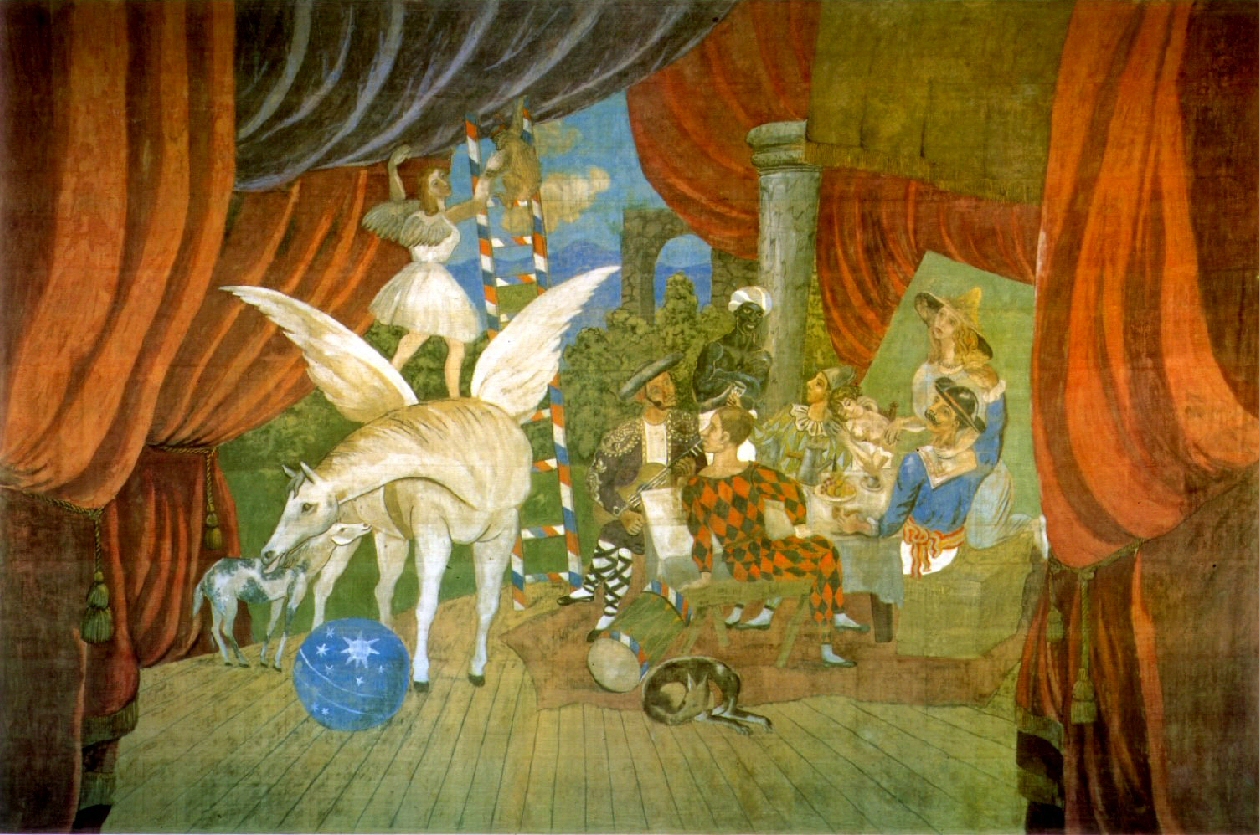art-Picasso.com
Pablo Picasso 1881-1973
©Pablo Picasso - Curtain for the ballet Parade 1917
 Curtain for the ballet Parade |
From Wikipedia, the free encyclopedia:
Parade is a ballet with music by Erik Satie and a one-act scenario by Jean Cocteau. The ballet was composed 1916–1917 for Sergei Diaghilev's Ballets Russes. The ballet premiered on Friday, May 18, 1917 at the Théâtre du Châtelet in Paris, with costumes and sets designed by Pablo Picasso, choreography by Léonide Massine (who danced), and the orchestra conducted by Ernest Ansermet.
The idea of the ballet seems to have come from Jean Cocteau. He had heard Satie's Trois morceaux en forme de poire ("Three Pieces in the Shape of a Pear") in a concert, and thought of writing a ballet scenario to such music. Satie welcomed the idea of composing ballet music (which he had never done until that moment) but refused to allow any of his previous compositions to be used for the occasion, so Cocteau started writing a scenario (the theme being a publicity parade in which three groups of circus artists try to attract an audience to an indoor performance), to which Satie composed the music (with some additions to the orchestral score by Cocteau, see below).
Work on the production started in the middle of the First World War, with Jean Cocteau traveling back and forth to the war front in Belgium until shortly before the premiere. The most difficult part of the creative process, however, seems to have been to convince Misia Edwards in supporting the idea of having this ballet performed by the Ballets Russes. She was easily offended but was trusted completely by Sergei Diaghilev for advice on his productions. A first version of the music (for piano) was dedicated to Misia and performed in 1916.